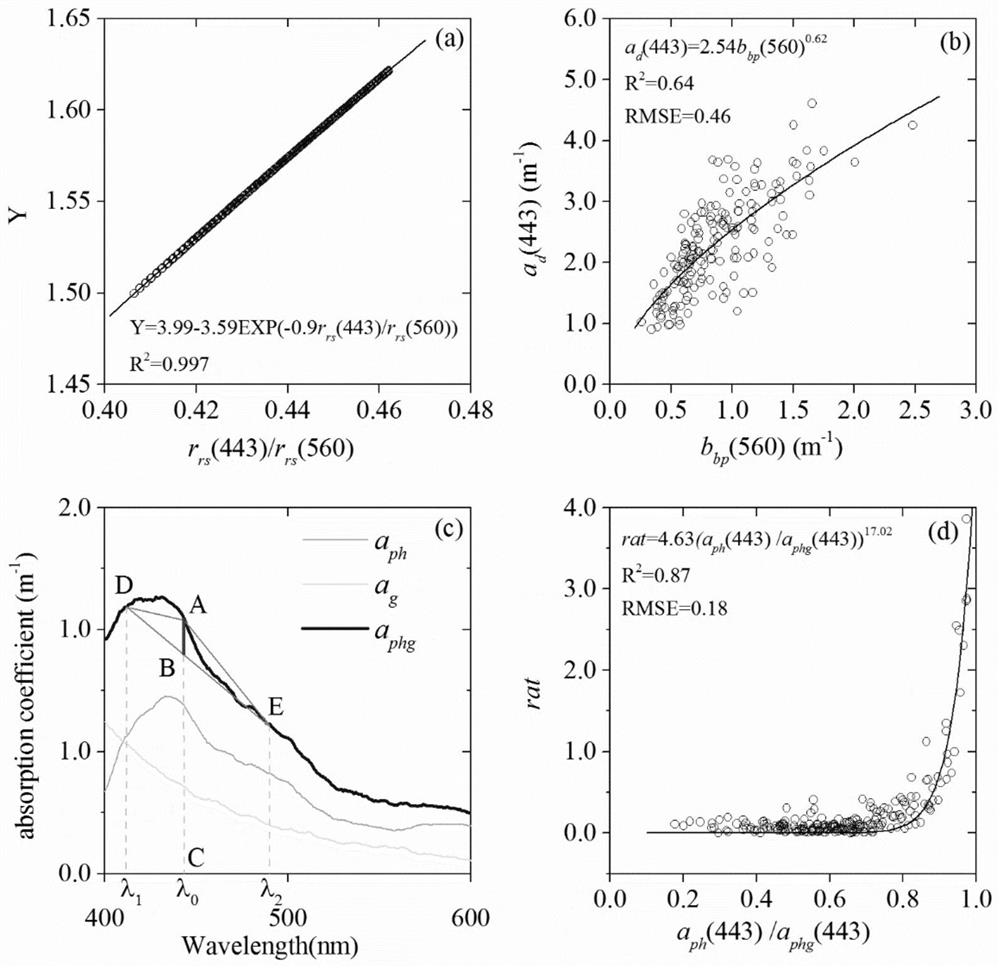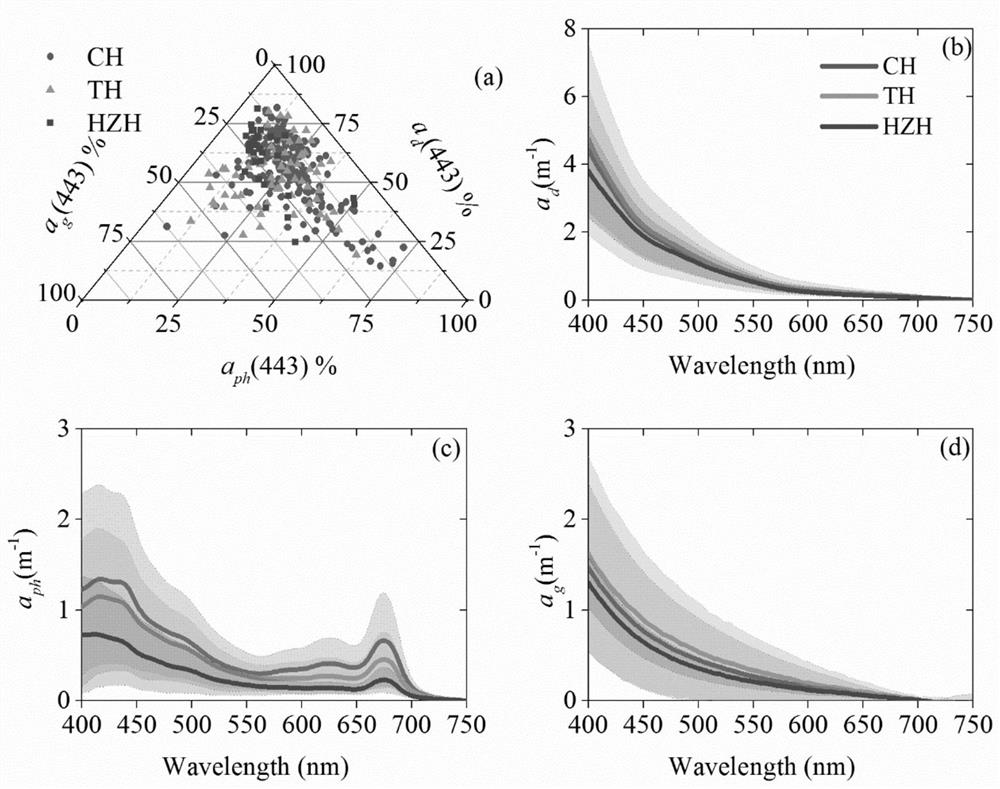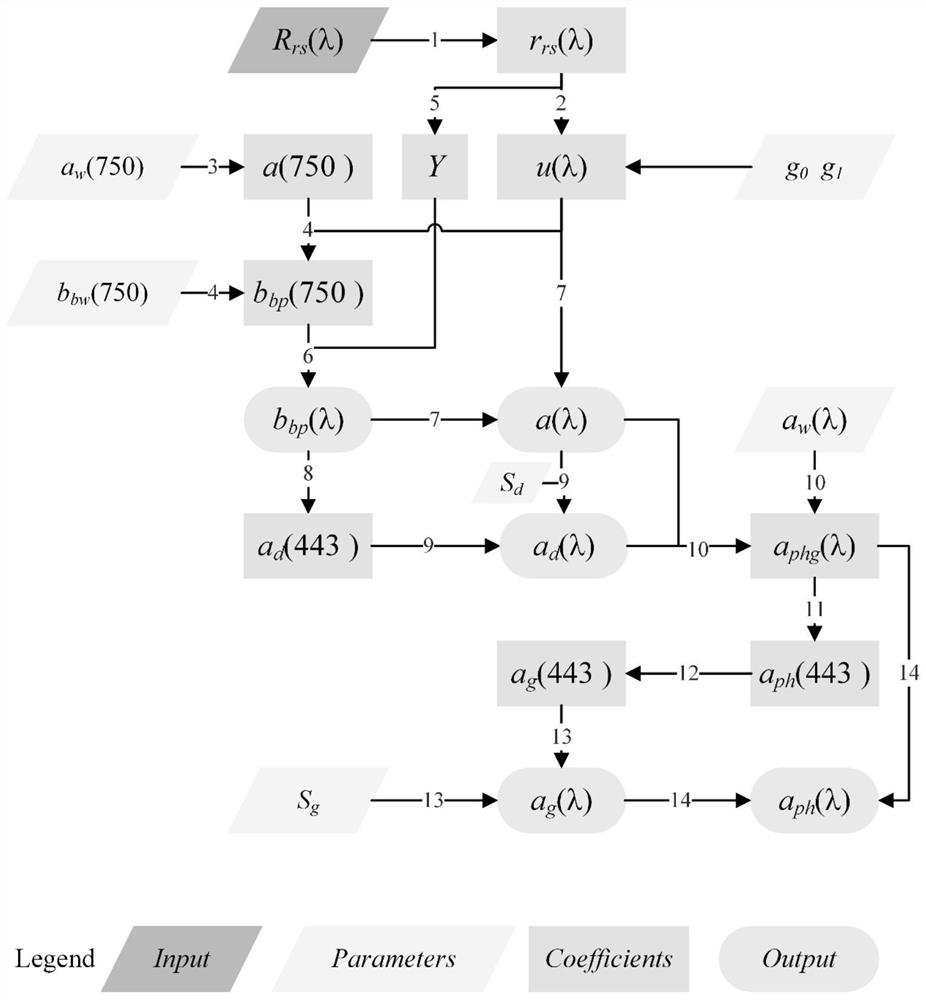An olci remote sensing monitoring method for inherent optical parameters of shallow lakes
A technology for optical parameter and remote sensing monitoring, applied in the measurement of color/spectral properties, material analysis by optical means, measurement devices, etc.
- Summary
- Abstract
- Description
- Claims
- Application Information
AI Technical Summary
Problems solved by technology
Method used
Image
Examples
Embodiment 1
[0113] This embodiment illustrates the specific implementation of the remote sensing monitoring method of the present invention.
[0114] In this embodiment, based on OLCI data, the remote sensing monitoring of the inherent optical parameters of shallow lakes is implemented as follows: on the basis of quasi-analytical algorithm (QAA), assuming that the total absorption of 750nm water body is equal to the absorption of pure water, the remote sensing reflectance of water body and the total Absorption coefficient (a), backscattering coefficient (b b ) relationship; according to the absorption coefficient (a d 、a ph 、a g 、a w ) characteristics and its relationship with the remote sensing reflectance spectrum (R rs ) and backscattering coefficient, and further decompose the total absorption coefficient of water body into the absorption coefficient of water body components; combined with the water body remote sensing reflectance spectrum and the corresponding water body group A...
PUM
 Login to View More
Login to View More Abstract
Description
Claims
Application Information
 Login to View More
Login to View More - R&D
- Intellectual Property
- Life Sciences
- Materials
- Tech Scout
- Unparalleled Data Quality
- Higher Quality Content
- 60% Fewer Hallucinations
Browse by: Latest US Patents, China's latest patents, Technical Efficacy Thesaurus, Application Domain, Technology Topic, Popular Technical Reports.
© 2025 PatSnap. All rights reserved.Legal|Privacy policy|Modern Slavery Act Transparency Statement|Sitemap|About US| Contact US: help@patsnap.com



